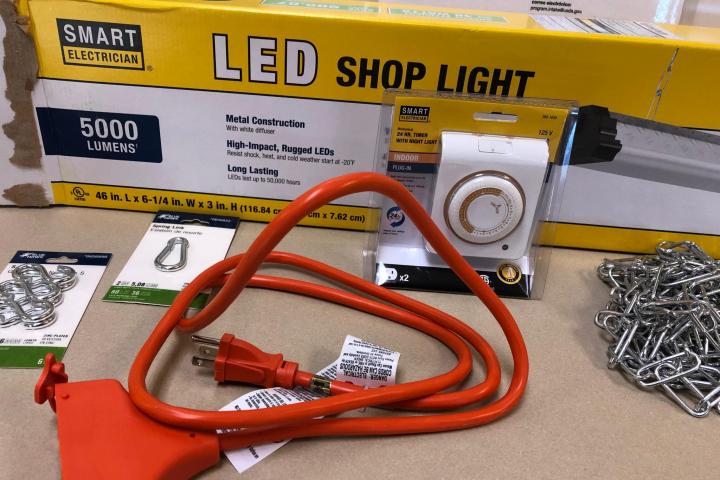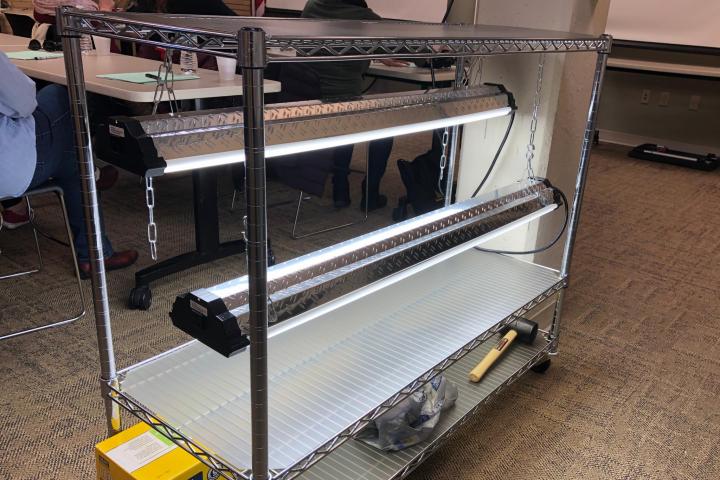Best Grow Lights for Growing Vegetables Indoors
What Kind of Indoor Grow Light Is Best?
For daily wit & wisdom, sign up for the Almanac newsletter.
Body
Just because the days are shorter in winter doesn’t mean that the growing season has to be over and done! Greens and some herbs will flourish indoors, under grow lights. Here’s what to consider when choosing indoor grow lights.
What Kind of Grow Light is Best?
Lighting options are wide-ranging, from fluorescent to HID (high-intensity discharge) to LED (light-emitting diode). Each type has an array of power requirements, brightness levels, and color temperatures.
- Fluorescent lights are an effective supplement to natural (window) light. Traditional fluorescent bulbs are tube-shaped and fit into specialized fixtures; Compact Fluorescent Lights (CFLs) are corkscrew-shaped and feature the same screw-in base that incandescent bulbs do, which allows them to fit into most household fixtures. Fluorescent lights put off minimal heat and a good amount of light, but are not as efficient or long-lasting as LEDs.
- High-Intensity Discharge (HID) lights are ideal for growing maturing edible plants. However, HIDs are expensive, use electricity inefficiently, and give off quite a bit of heat. Despite this, they are widely used in plant nurseries and large-scale grow houses because of their raw power.
- Light-Emitting Diode (LED) lights: For efficiently growing large numbers of plants, LEDs provide the best results. They use significantly less power to produce more light than traditional CFLs, and they produce very little heat. Although LEDs have traditionally been more expensive than fluorescent bulbs, the lifetime of an LED bulb is far longer and their up-front cost has begun to drop in recent years.

Buying Grow Lights
Before you purchase grow lights …
- Decide how many plants you want to illuminate and how much area they will occupy under the light(s). This will enable you to calculate how many bulbs you’ll need.
- Figure out what sort of plants you wish to grow. Edible plants that are grown purely for their leaves—such as salad greens and herbs—can be grown under bulbs that primarily emit blue light, as this encourages chlorophyll production and foliar growth. Plants that are grown for their fruit or flowers require the addition of red light, which encourages blooming. For the healthiest plants, use a combination of both blue and red lights—or a full-spectrum bulb, which emits both wavelengths of light.
- Think about how to position the light(s) over the plants so that you can easily alter the distance between the lights and the plants as they grow. Common options include suspending the lights from chains above your plants (e.g., on the ceiling or a sawhorse) and adjusting the chains as the plants grow. Or, stabilizing the light(s) and setting the planters on a stack of books, removing volumes as needed to lower the maturing plants.

- Remember, too, that each type of grow light provides a different amount of light. To be most effective, each light should be a specific distance from the plants: Fluorescent lights should be 3 to 12 inches above the tops of the plants; HIDs, 24 to 60 inches; and LEDs, 12 to 24 inches.
Plants grown under lights indoors need more hours of light than the same plants do outdoors. Grow lights should be on for at least 14 but no more than 18 hours per day; even indoor plants need a minimum of 6 hours of darkness each day.
Watch our video on how to use grow lights successfully!
About The Author
Benjamin Kilbride
Benjamin Kilbride has been an editorial contributor for The Old Farmer’s Almanac. While he doesn’t own any land, he gets creative gardening every year in pots, in small mobile greenhouses, and under lights in his pantry.
Read More from Benjamin Kilbride











